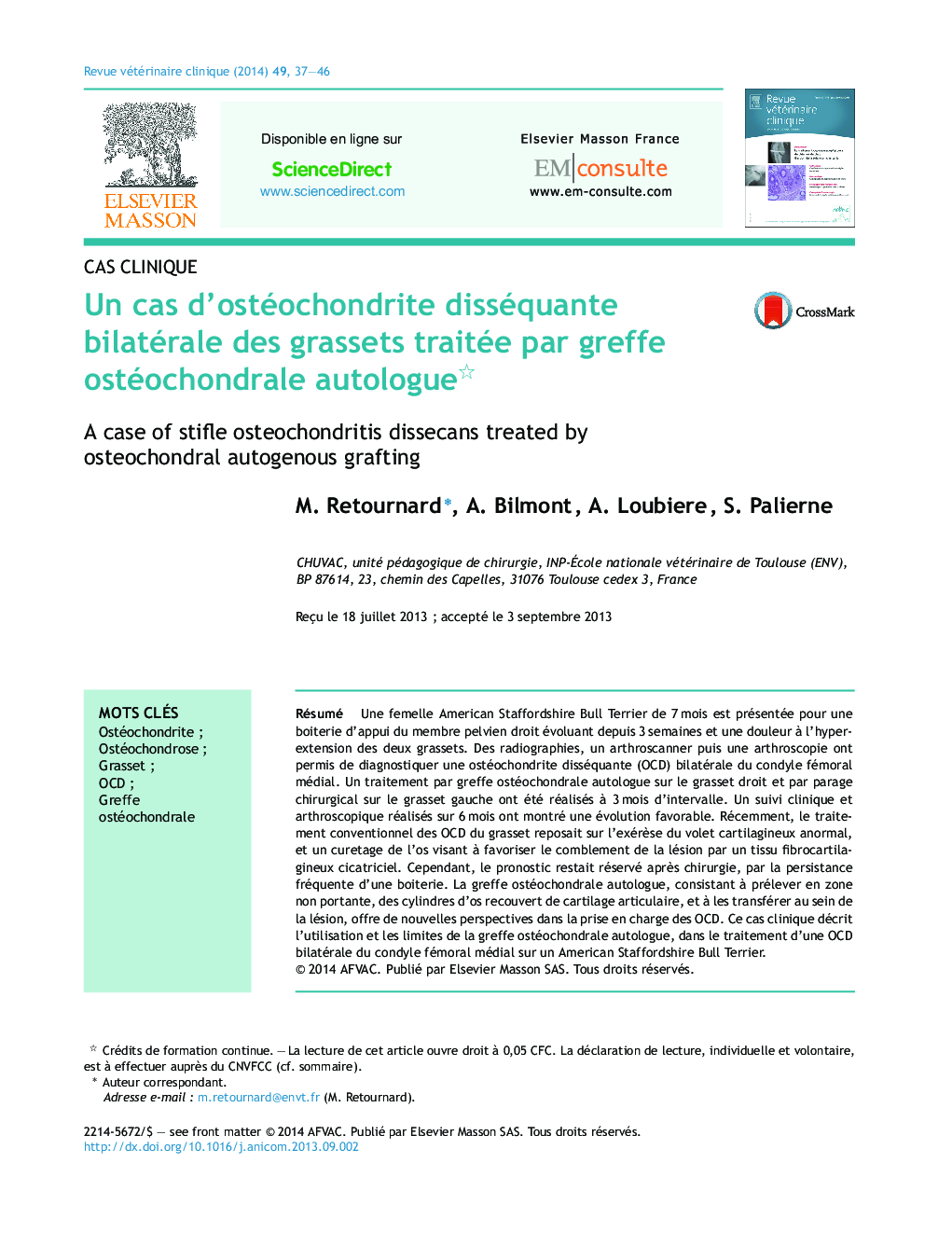| Article ID | Journal | Published Year | Pages | File Type |
|---|---|---|---|---|
| 2400995 | Revue Vétérinaire Clinique | 2014 | 10 Pages |
RésuméUne femelle American Staffordshire Bull Terrier de 7 mois est présentée pour une boiterie d’appui du membre pelvien droit évoluant depuis 3 semaines et une douleur à l’hyper-extension des deux grassets. Des radiographies, un arthroscanner puis une arthroscopie ont permis de diagnostiquer une ostéochondrite disséquante (OCD) bilatérale du condyle fémoral médial. Un traitement par greffe ostéochondrale autologue sur le grasset droit et par parage chirurgical sur le grasset gauche ont été réalisés à 3 mois d’intervalle. Un suivi clinique et arthroscopique réalisés sur 6 mois ont montré une évolution favorable. Récemment, le traitement conventionnel des OCD du grasset reposait sur l’exérèse du volet cartilagineux anormal, et un curetage de l’os visant à favoriser le comblement de la lésion par un tissu fibrocartilagineux cicatriciel. Cependant, le pronostic restait réservé après chirurgie, par la persistance fréquente d’une boiterie. La greffe ostéochondrale autologue, consistant à prélever en zone non portante, des cylindres d’os recouvert de cartilage articulaire, et à les transférer au sein de la lésion, offre de nouvelles perspectives dans la prise en charge des OCD. Ce cas clinique décrit l’utilisation et les limites de la greffe ostéochondrale autologue, dans le traitement d’une OCD bilatérale du condyle fémoral médial sur un American Staffordshire Bull Terrier.
SummaryA 7-month old female American Staffordshire Bull Terrier is presented for a right pelvic limb weight-bearing lameness appeared 3 weeks ago. The orthopedic examination revealed pain upon hyper-extension of both stifle joints. X-rays followed by a computed tomography and an arthroscopy led to the diagnosis of a bilateral osteochondritis dissecans (OCD) of the medial femoral condyle. An osteochondral autograft transplant was done on the right knee, and a surgical trimming on the left knee were performed with a 3 month interval between the two surgeries. The clinical and arthroscopic follow-up over a 6-month period shows favorable progress. Until recently, the conventional treatment of OCD of the knee was based on the removal of the abnormal cartilage flap, and bone curettage. The lesion was then gradually filled by a fibrocartilaginous scar tissue. However, prognosis after surgery was reserved, and chronic lameness was often encountered. Autologous osteochondral transplantation offers a new perspective for veterinary surgery in the treatment of OCD. This technique involves harvesting bone cylinders covered by articular cartilage from a non-weight-bearing areas and transplanting them in osteochondral defect. This case report describes the use and limits of autologous osteochondral grafting in the treatment of bilateral OCD of the medial femoral condyle of an American Staffordshire Bull Terrier.
